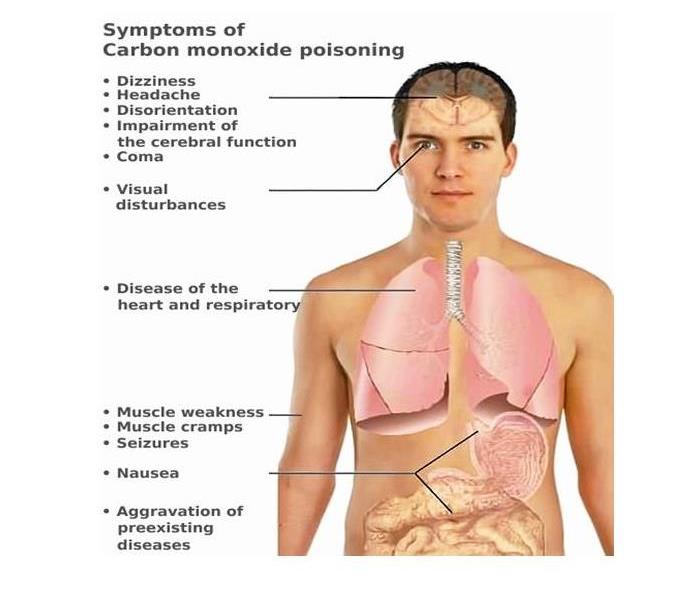Preventing Carbon Monoxide Exposure
1/20/2022 (Permalink)
Carbon Monoxide (CO) is difficult to detect. It has been coined the “silent killer” for a good reason. It doesn’t have a smell, color, or taste! It is a gas that is produced whenever fuel is burned and is dangerous to humans and animals.
When CO is inhaled, it starts to replace the oxygen in red blood cells and can lead to carbon monoxide poisoning or death. According to the CDC, carbon monoxide poisoning causes over 400 deaths each year, and more than 24,000 trips to the hospital, with the most incidents occurring in January and December, which is in direct correlation to the use of in-home heating systems.
You can typically run furnaces and use fireplaces in your home without the worry of carbon monoxide poisoning because fuel-burning appliances meant for in-home use are always designed with ventilation systems, like pipe vents for furnaces and chimneys for fireplaces, to direct emissions outside. A clogged chimney or poorly maintained furnace (or gas water heater, stove range, oven, etc.) can cause your home to fill with carbon monoxide. To prevent carbon monoxide poisoning, the CDC recommends: having your heating system, water heater, and any other gas, oil, or coal-burning appliances serviced by a qualified technician annually; having your chimney cleaned prior to winter each year; never burning charcoal or using a portable gas camp stove or a generator indoors; and installing carbon monoxide detectors on each level of your home and checking their batteries every six months. The EPA estimates that approximately half of carbon monoxide-related deaths are preventable with the use of an audible CO detection unit.
For more prevention guidance, you can also visit Cdc.gov



 24/7 Emergency Service
24/7 Emergency Service
